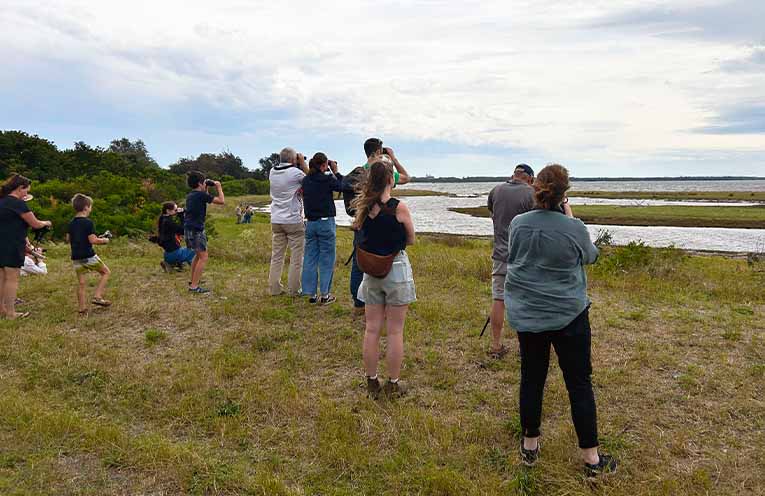THE NSW Government’s Local Land Services recently teamed up with BirdLife Australia and the Hunter Bird Observers Club to deliver a series of shorebird workshops aimed at inspiring greater understanding and protection of these remarkable migratory species.
The ‘Securing the Sanctuaries of Ramsar and Priority Wetlands for Migratory and Marine Species’ project is funded by the Australian Government Natural Heritage Trust and delivered by Hunter Local Land Services, a member of the Commonwealth Regional Delivery Partners panel.
Three workshops were held across the region – with sessions at Barray Alliance in Taree, Forster, and Stockton Sandspit – attracting Aboriginal rangers, community members and keen birdwatchers.
Participants were introduced to the fascinating world of shorebirds, learning how to identify key species and the simple actions everyone can take to help protect them.
Following a theory session and a shared lunch, participants headed outdoors to put their new skills into practice at:
● Old Bar – Barray Alliance rangers enjoyed excellent views of eastern curlew, whimbrel and pied oystercatchers
● Forster – the group spotted both sooty and pied oystercatchers along the sandbars near the Forster–Tuncurry bridge
● Stockton Sandspit – the Newcastle participants were treated to large flocks of shorebirds across several species.
The workshops form part of a broader project, which supports the recovery and resilience of the Hunter Estuary Wetlands and Myall Lakes Ramsar sites.
The project works alongside First Nations peoples to improve habitat, build climate change resilience and increase community understanding of the threats facing migratory species.
“By sharing information about shorebirds, we hope more people become aware of the threats these birds face and are inspired to take part in shorebird population and disturbance monitoring along our coast,” said Jennifer Lewis, Team Leader Natural Resource Management, from Hunter Local Land Services.
The eastern curlew, sighted by participants at Old Bar, is the largest migratory shorebird in the world and one of the most threatened.
These birds migrate annually between Australia, China and Russia, relying on undisturbed feeding and roosting sites along the Hunter coast to build the energy reserves needed for their long journey north.
Even a person walking 250 metres away can cause them to take flight, highlighting how sensitive they are to disturbance.
Hunter Local Land Services said awareness is key to protecting these species, which face a range of threats, including habitat loss, predation by introduced animals, industrial and urban development, and disturbance from people and pets at key feeding sites.
Rising sea levels and climate change are further intensifying pressure on these coastal wetlands.
Stockton Sandspit, where workshop participants observed large flocks of shorebirds, is one of the most significant roosting sites in New South Wales.
Its ongoing value is maintained through the efforts of volunteers from the Hunter Bird Observers Club who monitor bird populations and help manage the habitat.



